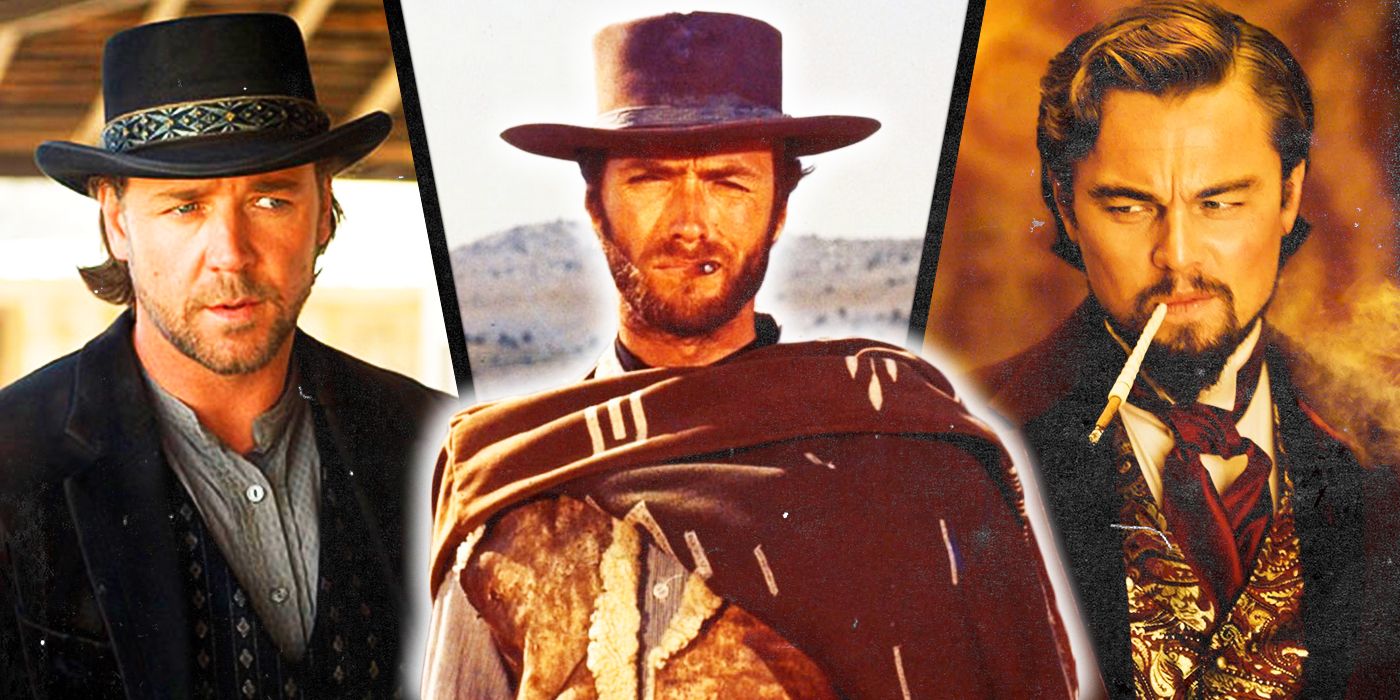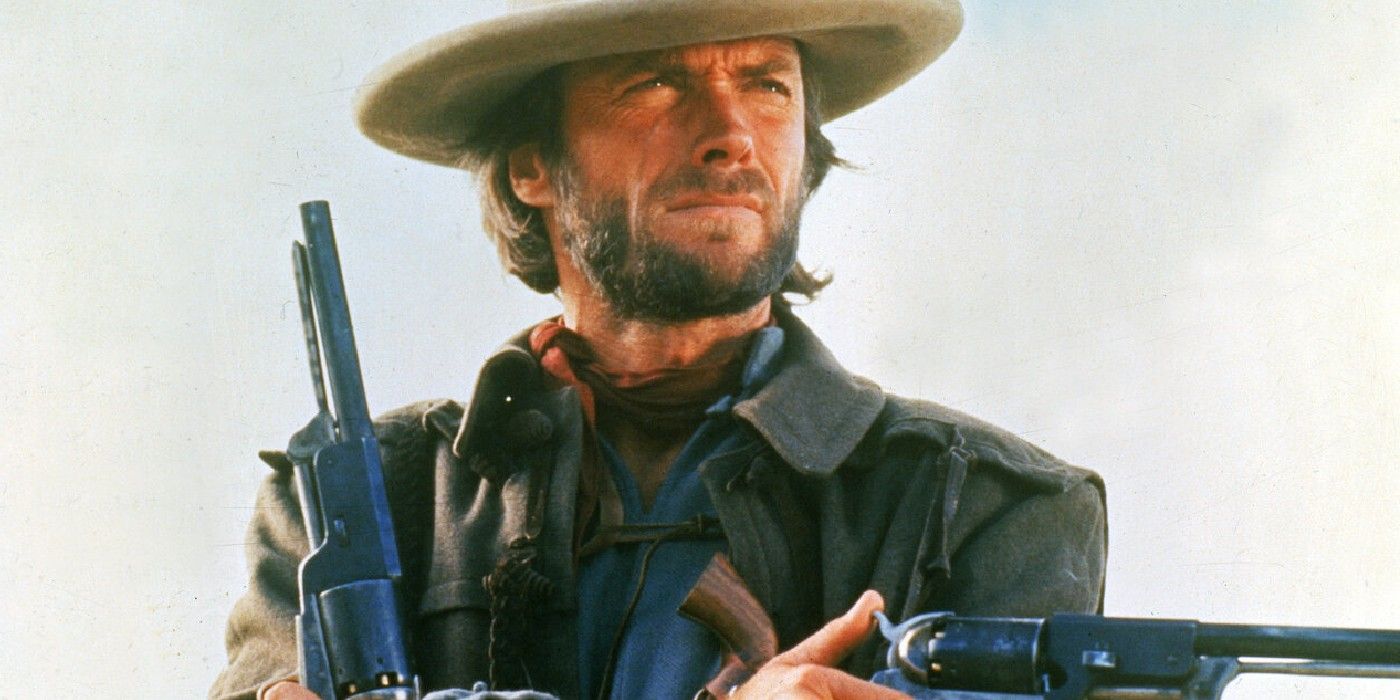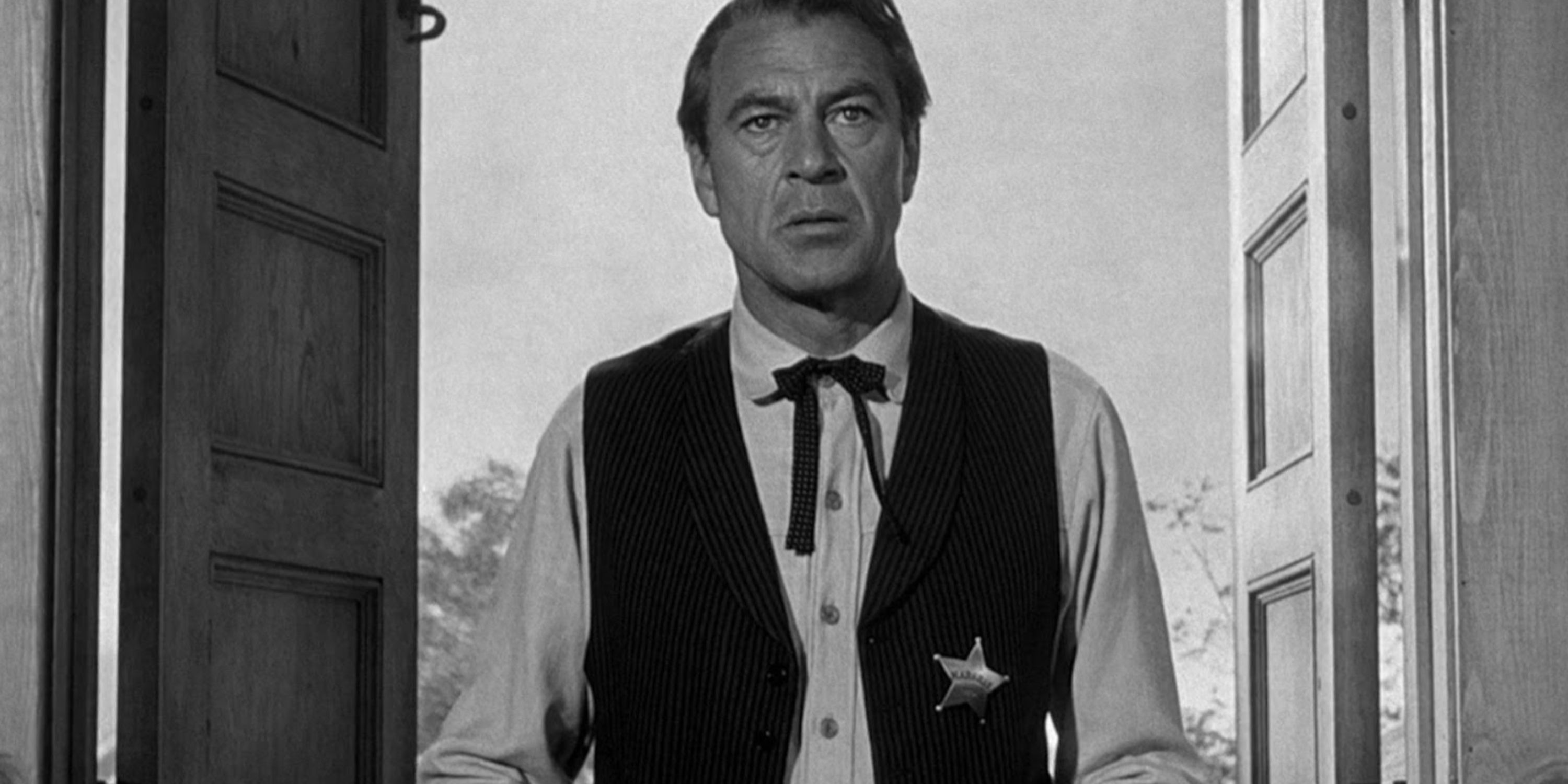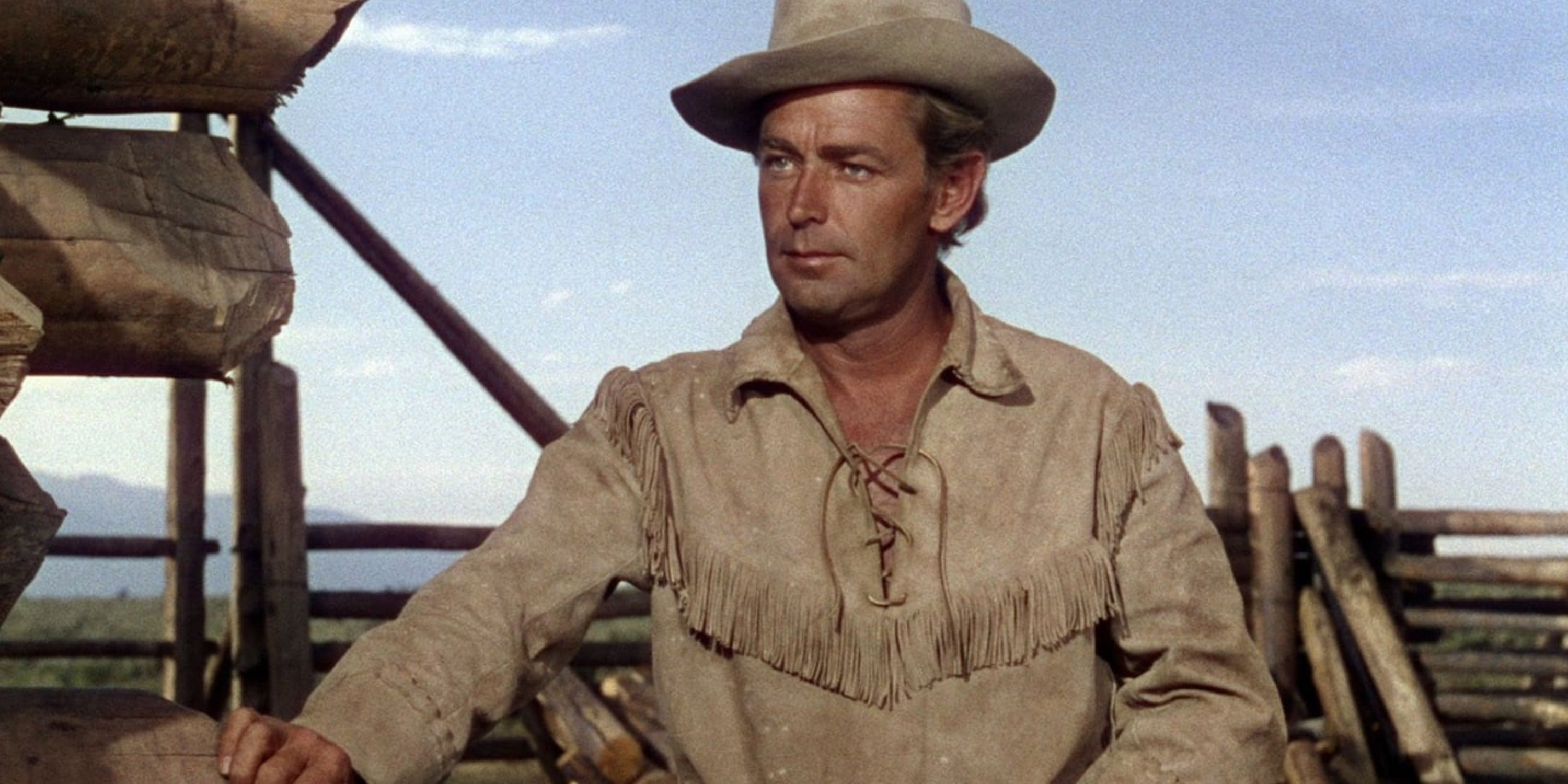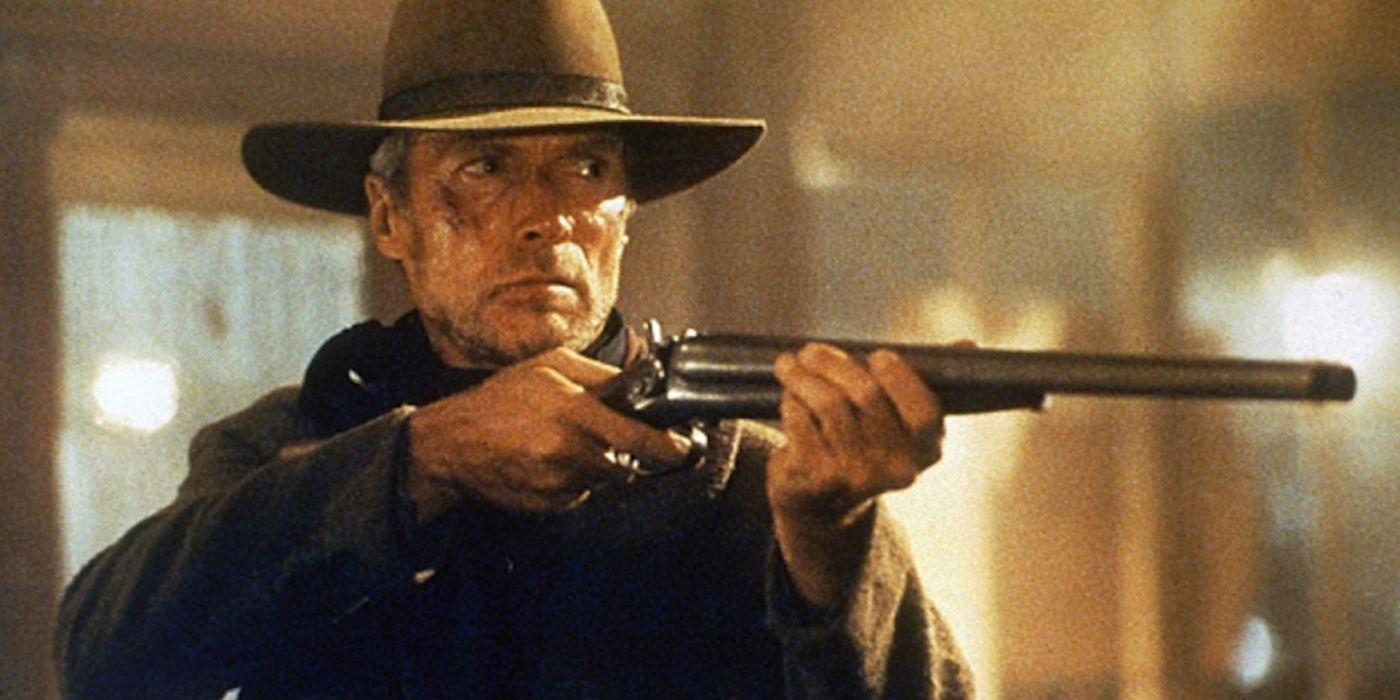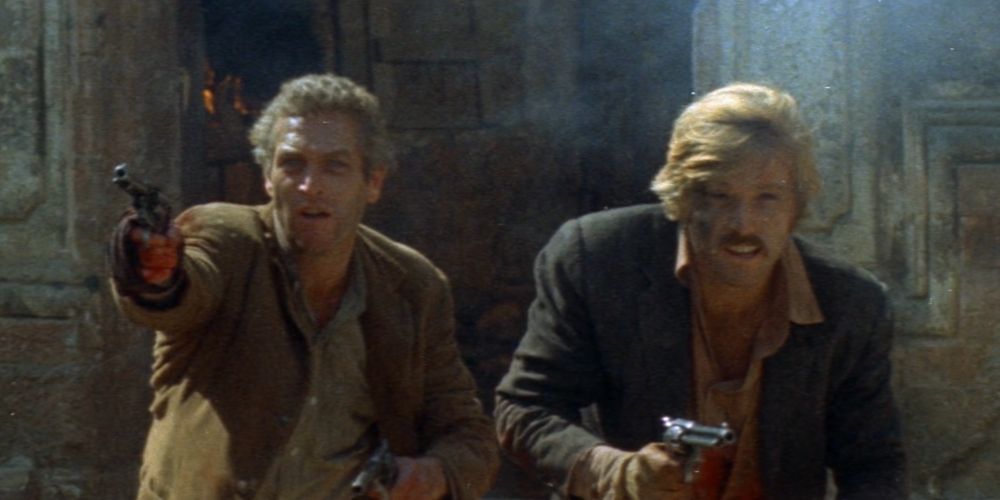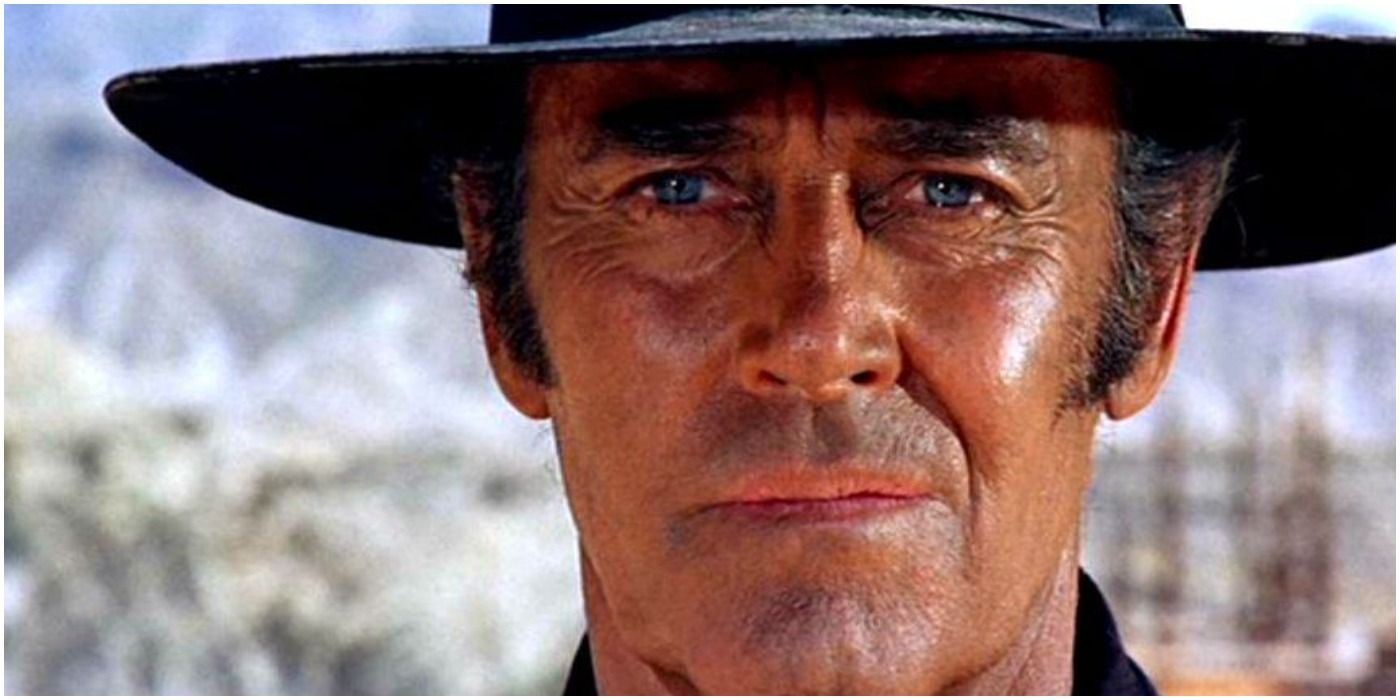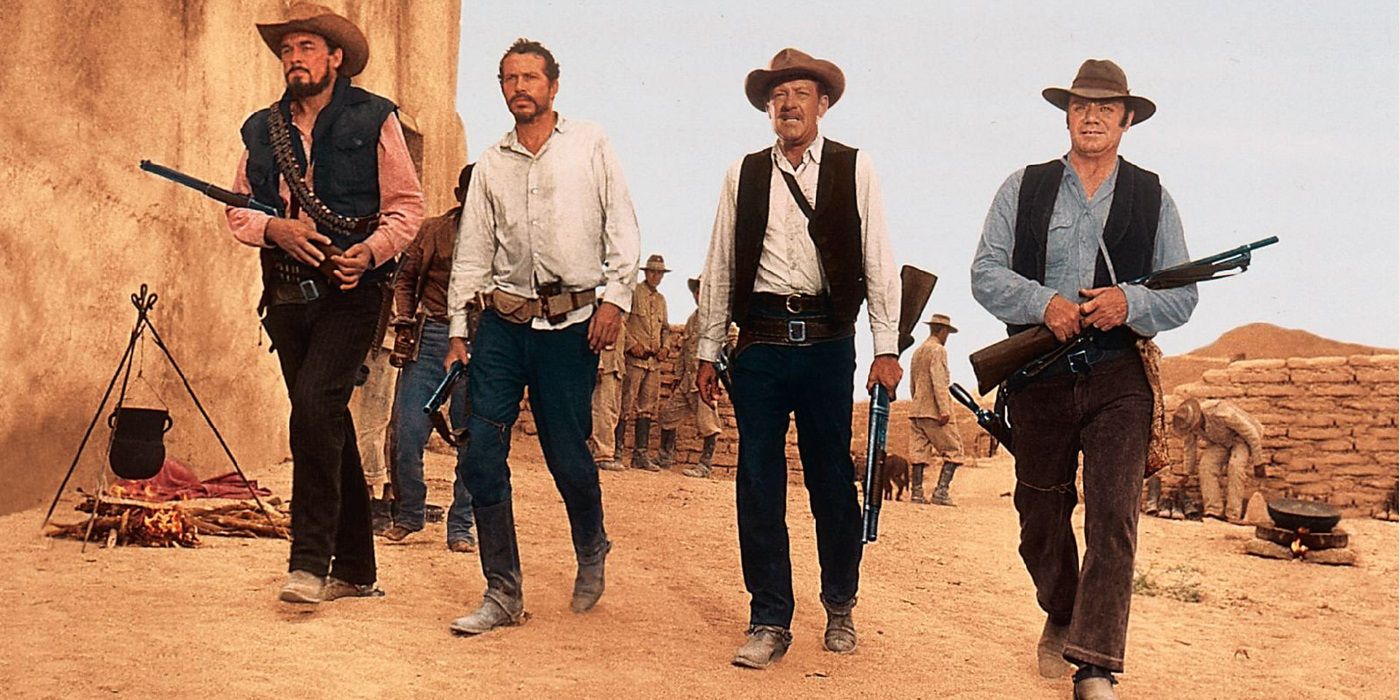At the end of nearly every Western film, all the tough-talking, posturing, and drinking culminates in one of the most famous movie tropes of all time: a shootout in the final showdown. When these climactic moments arrive, villagers batten their shutters, tumbleweeds float down an empty street, and the hero and villain square up, their fingers itching to pull the trigger on their six-shooters. Then, both parties draw their weapon, shots ring out, and the hero or villain falls.
Shootouts are such an iconic part of Westerns that the rhythm and beats of the moment are easy to recall. From the standoff inside a saloon at the end of Shane to the cemetery stare-down between three men in The Good, the Bad, and the Ugly, a Western's final showdown is where it proves its mettle.
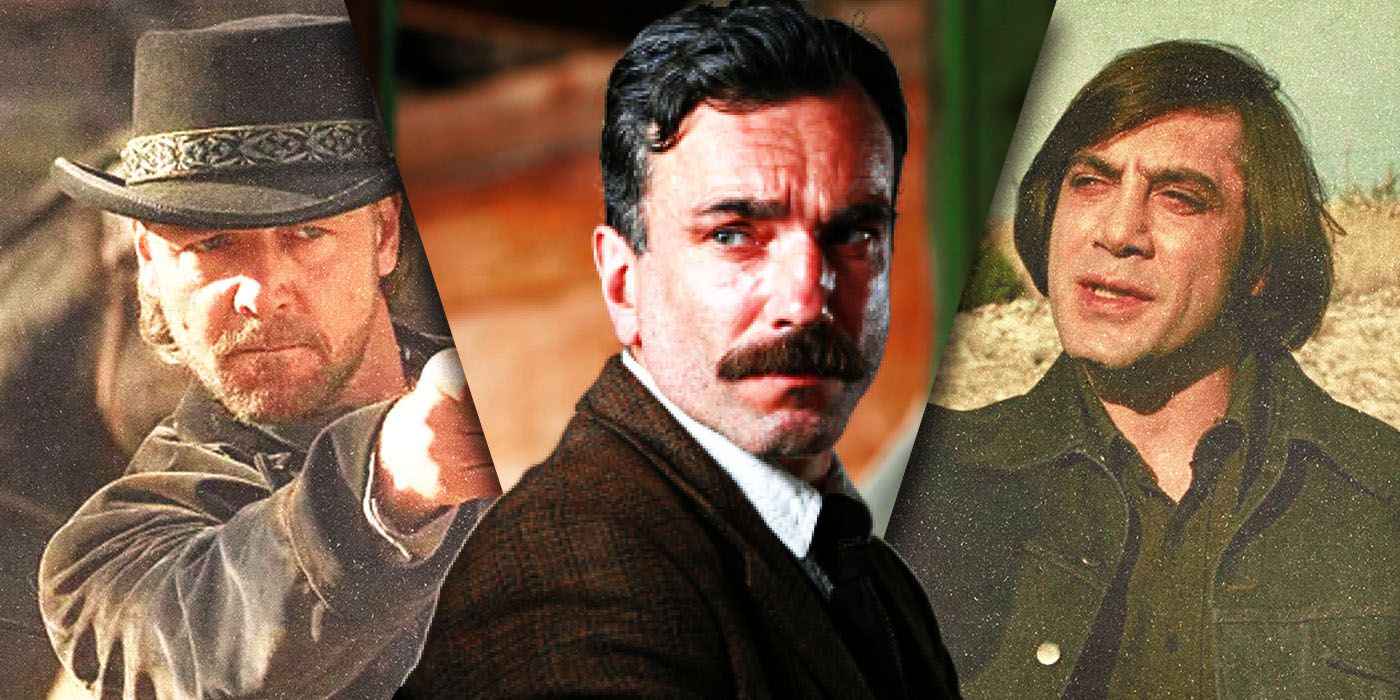
10 Best Western Movies of the 2000s, Ranked
While the 2000s were not the Western genre's heyday, films like No Country for Old Men and There Will Be blood helped to carry the genre.10 3:10 to Yuma's Conclusion Offered a Healthy Dose of Moral Complexity
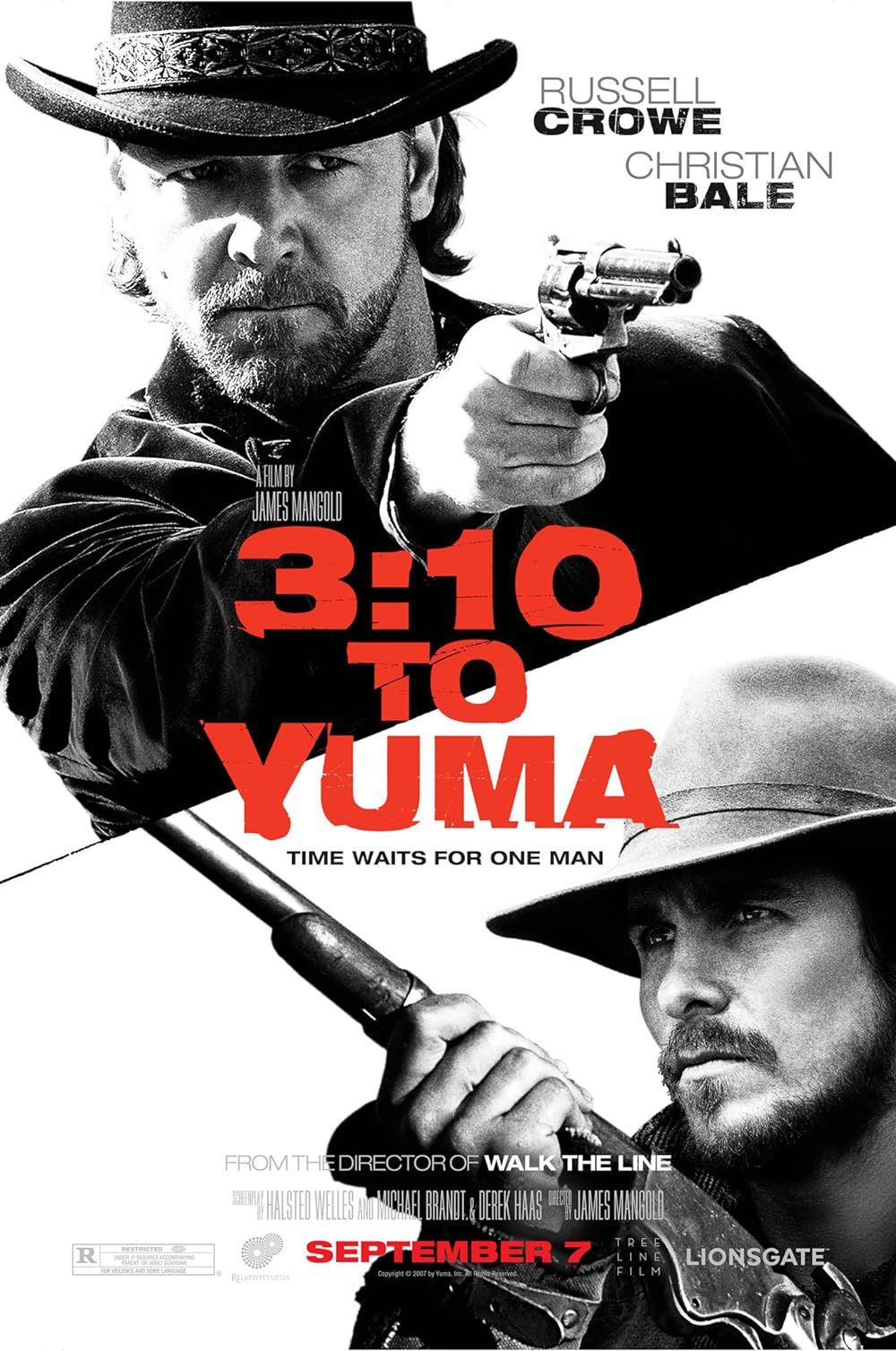
3:10 to Yuma
A small-time rancher agrees to hold a captured outlaw who's awaiting a train to go to court in Yuma. A battle of wills ensues as the outlaw tries to psych out the rancher.
- Director
- James Mangold
- Release Date
- August 21, 2007
- Cast
- Russell Crowe , Christian Bale , logan lerman , Dallas Roberts , Vinessa Shaw
- Runtime
- 2 hours 2 minutes
- Main Genre
- Western
In 3:10 to Yuma, the infamous outlaw Ben Wade is escorted by a series of deputized men to meet the 3:10-to-Yuma train to stand trial for his crimes. One of those men, Dan Evans, agrees to the job to use the money offered to save his homestead and improve his family's lot in life. Of course, this being a Western, Wade's gang is out to get their leader back, and slowly but surely, Evans's posse of men is whittled down until it's just him, his son, and Wade left standing.
At the end of 3:10 to Yuma, Evans must shoot through the town to ensure that Wade gets to the train on time. During the film, these two men have begrudgingly come to respect one another. So, when one of Wade's men drops Evans in the final showdown, Wade turns on his gang to get retribution before getting on the train and resigning himself to the scales of justice. That premise produces a thrilling and morally charged finale that few other Westerns have ever been able to top.
9 The Outlaw Josey Wales Ended in Fire and Fury
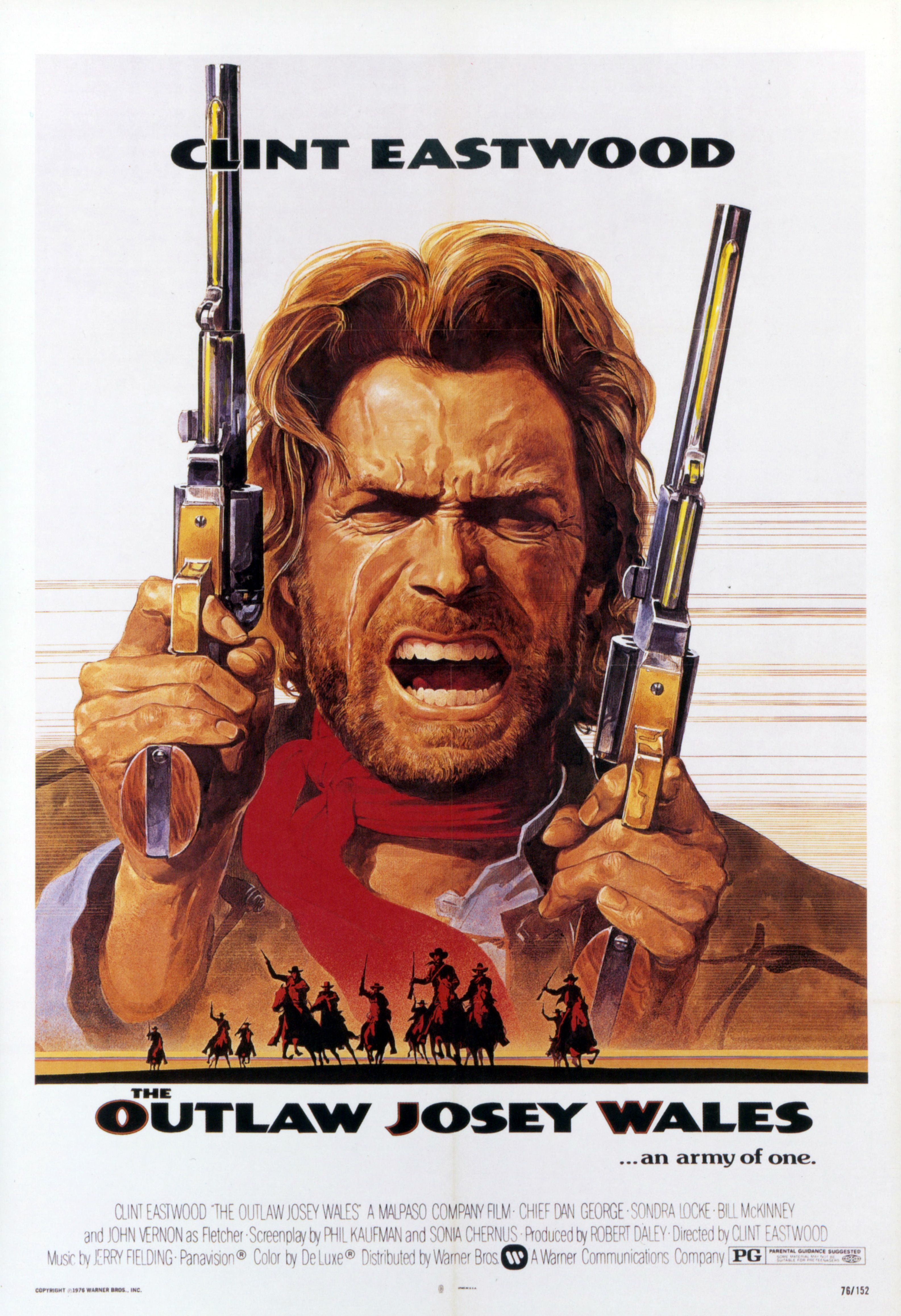
The Outlaw Josey Wales
Missouri farmer Josey Wales joins a Confederate guerrilla unit and winds up on the run from the Union soldiers who murdered his family.
- Director
- Clint Eastwood
- Release Date
- June 30, 1976
- Cast
- Clint Eastwood , Sondra Locke , Chief Dan George , Bill McKinney , John Vernon , Paula Trueman
- Runtime
- 2 hours 15 minutes
- Main Genre
- Western
- Writers
- Forrest Carter , Philip Kaufman , Sonia Chernus
- Production Company
- Warner Bros., The Malpaso Company
|
Rotten Tomatoes |
91% |
|---|---|
|
IMDb |
7.8/10 |
|
Metacritic |
69% |
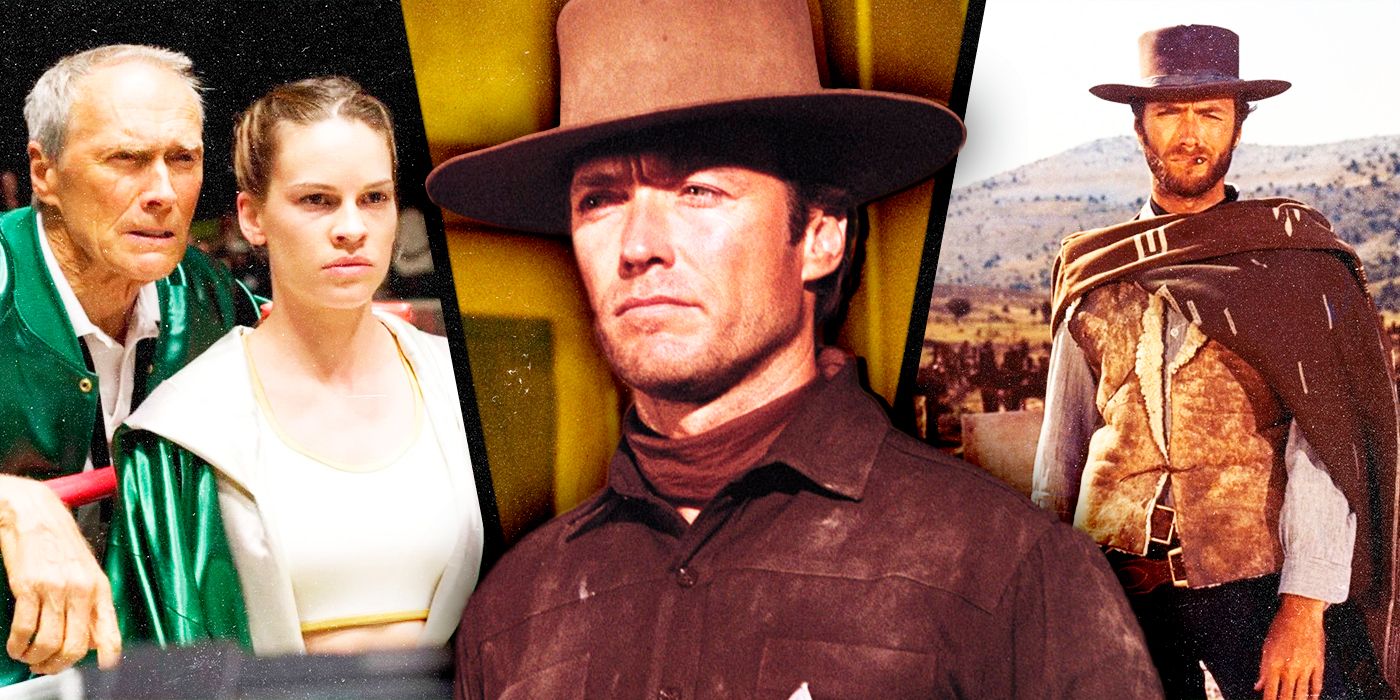
10 Best Clint Eastwood Movies, Ranked
From the Dollars trilogy and classic westerns to dramas like Million Dollar Baby, Clint Eastwood's cinematic resume makes him an icon.Based on the famous Western novel by Asa Earl Carter, The Outlaw Josey Wales starred Clint Eastwood as the titular character and told the story of a Missouri farmer who joined the Confederacy in the Civil War after a Union militia murdered his family. Following their surrender at the end of the war, Wales and his squad of men are betrayed by the same group that killed his family, leading to him becoming an outlaw and thirsting for revenge more than ever.
The action of The Outlaw Josey Wales culminates with the hero and his allies sequestered inside an abandoned ranch as the pro-Union militia known as Redlegs once again attacks. What follows is one of the Western genre's all-time most extraordinary sieges as Josey and his friends dig in and hold their ground in one gigantic and very violent final shootout.
8 High Noon Featured an Emotionally Satisfying Final Showdown
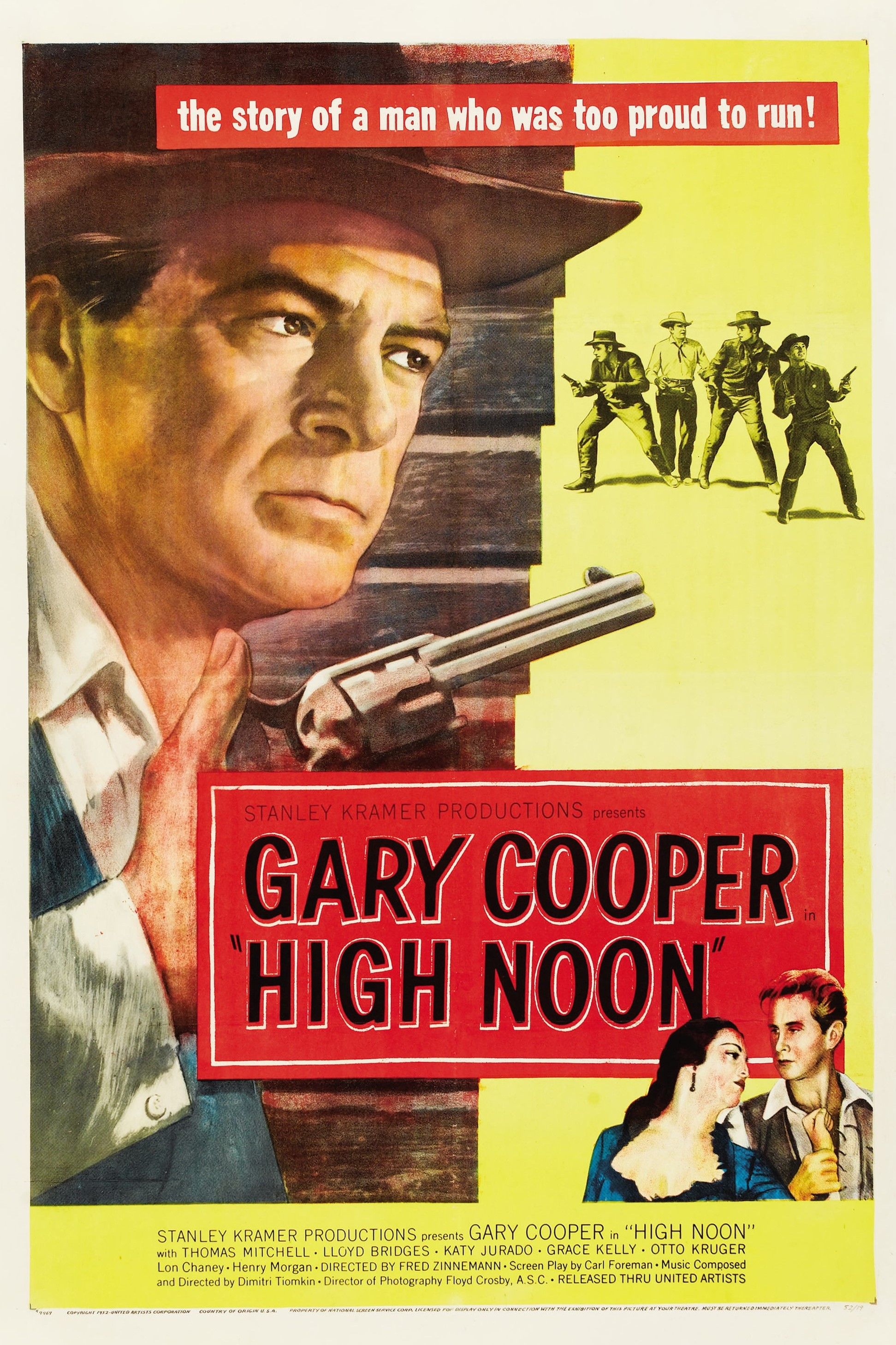
High Noon
A town Marshal, despite the disagreements of his newlywed bride and the townspeople around him, must face a gang of deadly killers alone at "high noon" when the gang leader, an outlaw he "sent up" years ago, arrives on the noon train.
- Director
- Fred Zinnemann
- Release Date
- July 24, 1952
- Cast
- Gary Cooper , Thomas Mitchell , Grace Kelly , Lloyd Bridges , Katy Jurado , Otto Kruger
- Runtime
- 1 hour 25 minutes
- Main Genre
- Western
- Writers
- Carl Foreman , John W. Cunningham
- Production Company
- Stanley Kramer Productions
|
Rotten Tomatoes |
94% |
|---|---|
|
IMDb |
8/10 |
|
Metacritic |
89% |
One of the absolute most iconic Westerns ever made, High Noon stars Gary Cooper as Marshal Will Kane, a man who spends most of the film trying to round up help to assist in his inevitable showdown with the film's antagonist, the outlaw Frank Miller. With no one in town seemingly willing to do the right thing, the real-time buildup to this encounter creates an incredible sense of tension.
When the time finally arrives, Kane must defend the town against Frank Miller and his gang of men alone. High Noon's resulting shootout is full of twists and turns, from Kane nearly dying to his estranged wife finally choosing to side with her husband and join the fight. Few other Western final showdowns are as emotionally satisfying as this one.
7 Shane's Ambiguous Finale Was Its Defining Trait
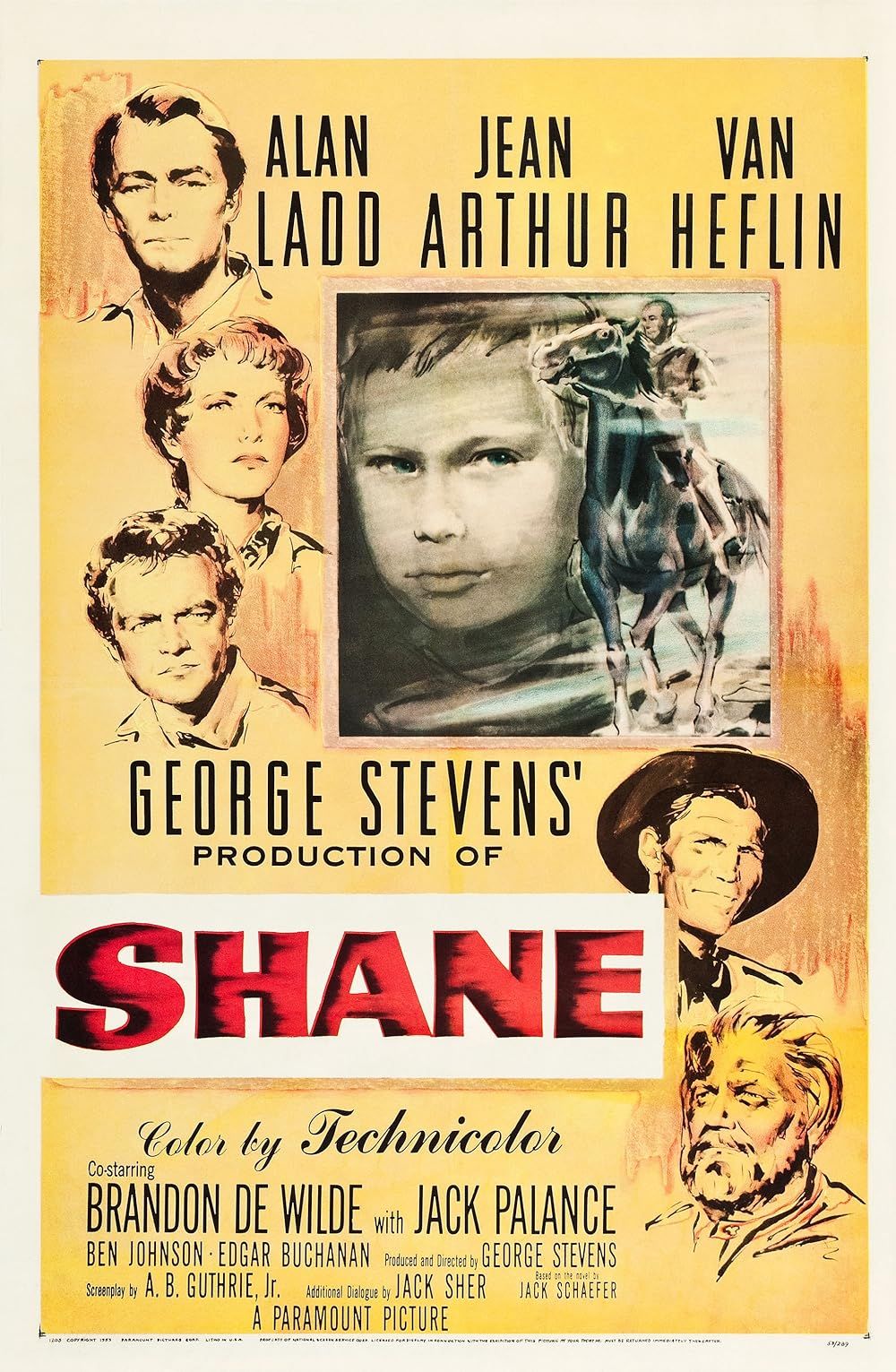
Shane
A weary gunfighter in 1880s Wyoming begins to envision a quieter life after befriending a homestead family with a young son who idolizes him, but a smoldering range war forces him to act.
- Director
- George Stevens
- Release Date
- August 14, 1953
- Cast
- Jean Arthur , Van Heflin , Brandon De Wilde , Jack Palance , Ben Johnson
- Runtime
- 1 hour 58 minutes
- Main Genre
- Western
- Production Company
- Paramount Pictures
|
Rotten Tomatoes |
97% |
|---|---|
|
IMDb |
7.6/10 |
|
Metacritic |
85% |
When a gunslinger dressed in black, Jack Wilson, is hired to run a group of farmers off their land, only a man named Shane stands in their way. Although he is reticent to use violence, after learning of the villains' plan to double-cross his employer, Shane travels into town in his boss' place to take on Wilson and his associates on his own.
The editing of Shane's climactic showdown is top-notch and masterfully builds suspense to an absolute pitch before the bullets finally begin to fly. Although Shane is successful in his mission, he chooses to ride off into the sunset alone at the end, as the young son of his employer begs him to return. Ending the film on such an ambiguous note is what made this film so memorable.
6 Unforgiven Ended by Subverting Audiences' Expectations
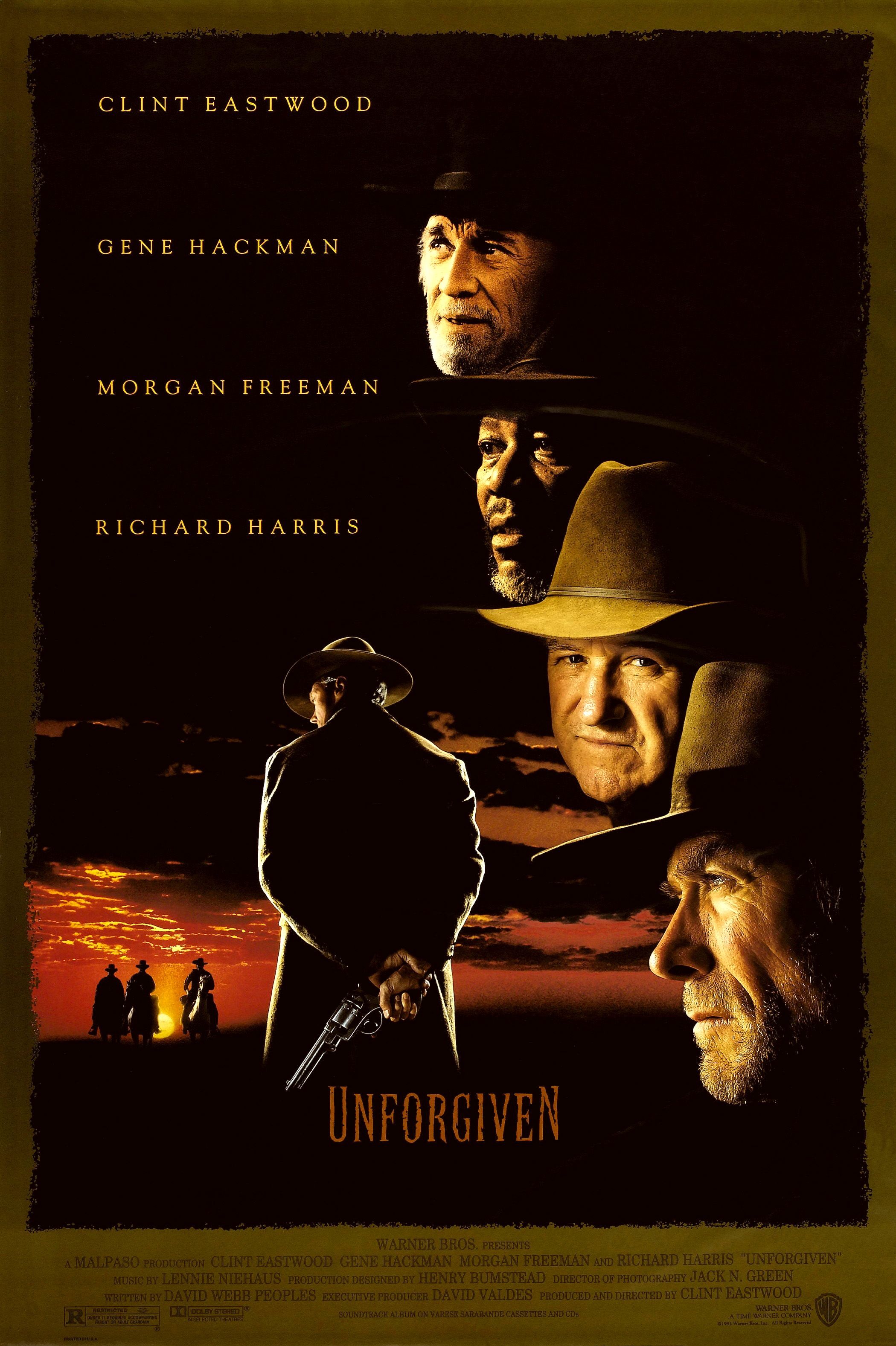
Unforgiven (1992)
Retired Old West gunslinger William Munny reluctantly takes on one last job, with the help of his old partner Ned Logan and a young man, The "Schofield Kid."
- Director
- Clint Eastwood
- Release Date
- August 7, 1992
- Cast
- Clint Eastwood , Gene Hackman , Morgan Freeman , Richard Harris
- Runtime
- 2 hours 10 minutes
- Main Genre
- Western
- Writers
- David Webb Peoples
- Production Company
- Warner Bros., Malpaso Productions
|
Rotten Tomatoes |
97% |
|---|---|
|
IMDb |
7.6/10 |
|
Metacritic |
85% |
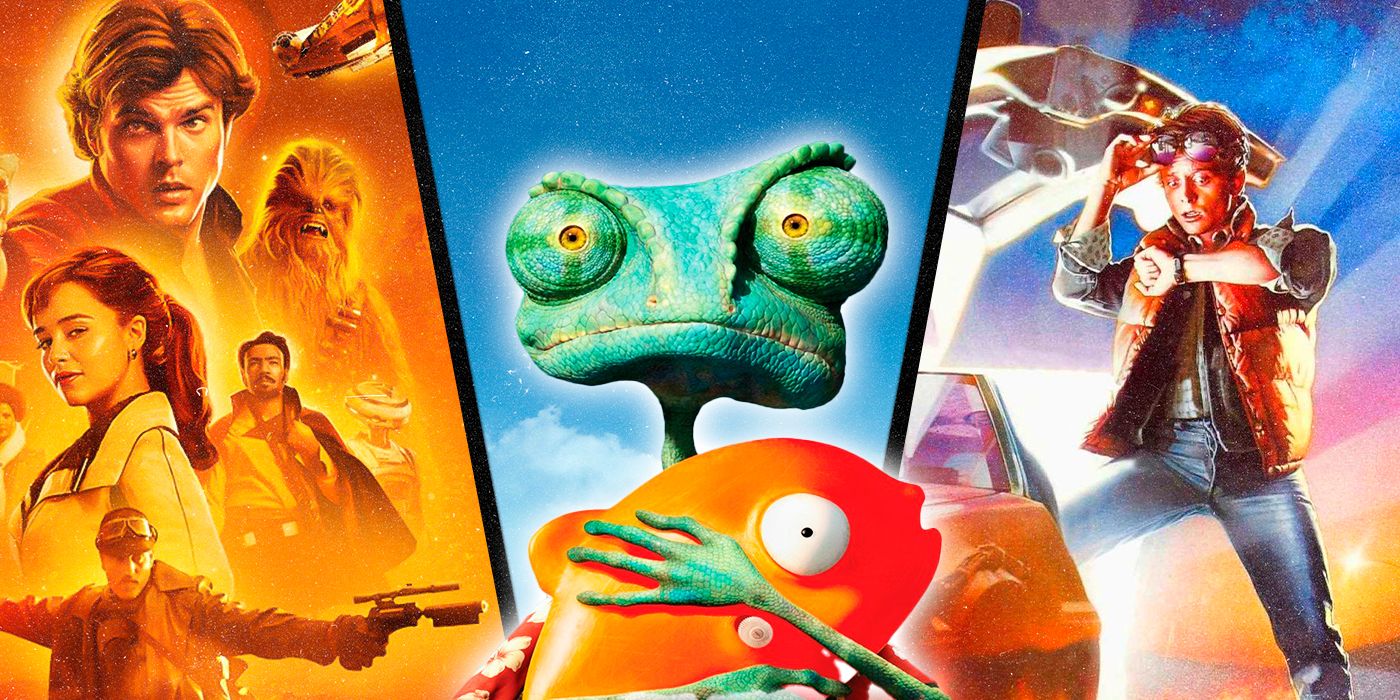
10 Best Western Movies that Combine Other Genres, Ranked
The revival of the Western is in part due to a rise in genre-bending entries to the genre - here are ten of the best in recent years.Movies don't come much bleaker than Unforgiven. Clint Eastwood's final Western was a deconstruction that offered the actor (and director) a bittersweet opportunity to say goodbye to the genre that has put him on the map. This unflinching portrayal of the consequences of revenge ended in a final showdown between Eastwood's William Munny and Gene Hackman's corrupt lawman, Little Bill, which masterfully subverted the audiences' expectations.
Rather than conclude on a moment that would celebrate William Munny for his heroism, Unforgiven ends in a brutal and morally complicated saloon shootout. Even though many of them have been terrorized by Little Bill, the on-looking townspeople do not celebrate his death. Instead, they are terrified, having witnessed the violence that the "hero," William Munny, can dole out.
5 Django Unchained's Finale Was Utterly Explosive
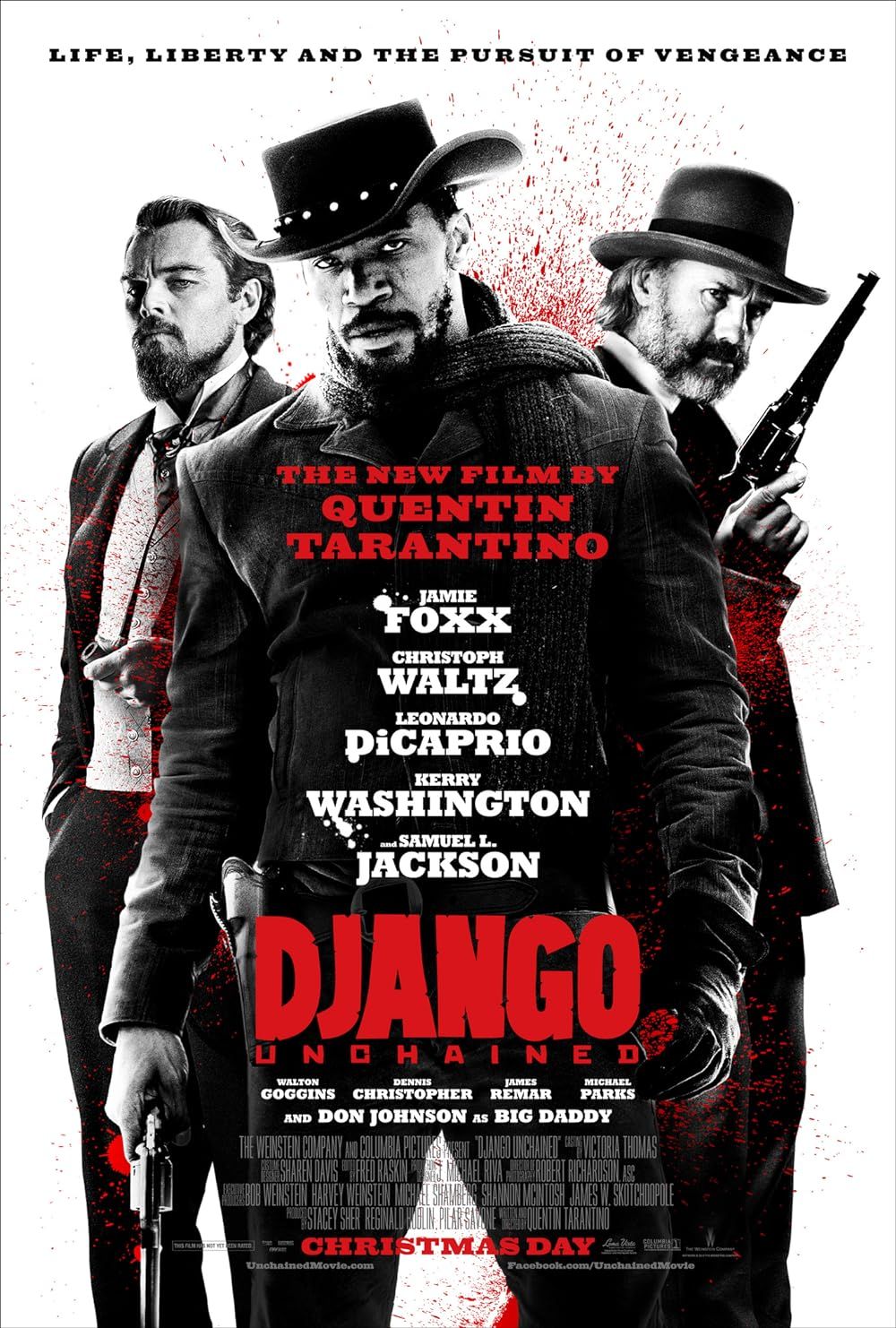
Django Unchained
A bounty hunting scam joins two men in an uneasy alliance against a third in a race to find a fortune in gold buried in a remote cemetery.
- Director
- Quentin Tarantino
- Release Date
- December 25, 2012
- Cast
- Jamie Foxx , Christoph Waltz , Leonardo DiCaprio
- Runtime
- 2 hours 45 minutes
- Main Genre
- Western
- Writers
- Quentin Tarantino
- Production Company
- The Weinstein Company, Columbia Pictures
|
Rotten Tomatoes |
87% |
|---|---|
|
IMDb |
8.5/10 |
|
Metacritic |
81% |
In Django Unchained, a formerly enslaved man named Django teams up with a German bounty hunter named Schultz to embark on an epic quest that crosses the American frontier. Eventually, that quest leads him to his wife, Broomhilda, who is held captive by the malicious plantation owner, Calvin Candy. Once Candy learns of Django and Schultz's plan to buy Broomhilda's freedom, it results in a symphony of violence.
Directed by Quentin Tarantino, who is no stranger to putting violence on screen, the final two showdowns of Django Unchained arguably combine to form the bloodiest finale Tarantino has ever imagined. While Django is defeated during the initial confrontation, he soon returns to Candy's ranch to finish what he started, saving his wife and blowing the plantation sky-high with a handful of dynamite.
4 Butch Cassidy and the Sundance Kid Created an Unforgettable Final Image
|
Rotten Tomatoes |
89% |
|---|---|
|
IMDb |
8/10 |
|
Metacritic |
66% |
With Butch Cassidy and the Sundance Kid, acclaimed screenwriter William Goldman created what came to be known as the anti-Western genre. Rather than set its focus on a series of lawmen looking to take down the outlaws, this film dared to have its audience relate with the titular "bad guys" themselves. Of course, being played by Paul Newman and Robert Redford, it wasn't all that hard for audiences to fall in love.
This calculated decision paid off handsomely in the end when both Butch and Sundance found themselves cornered in a Bolivian village while on the run. As they prepare themselves for death, both men maintain their witty camaraderie with one another. When the film ends on a final frozen frame moments before they're gunned down, audiences are left devastated by the loss.
3 Once Upon a Time in the West Extended its Final Showdown to Unrivaled Lengths
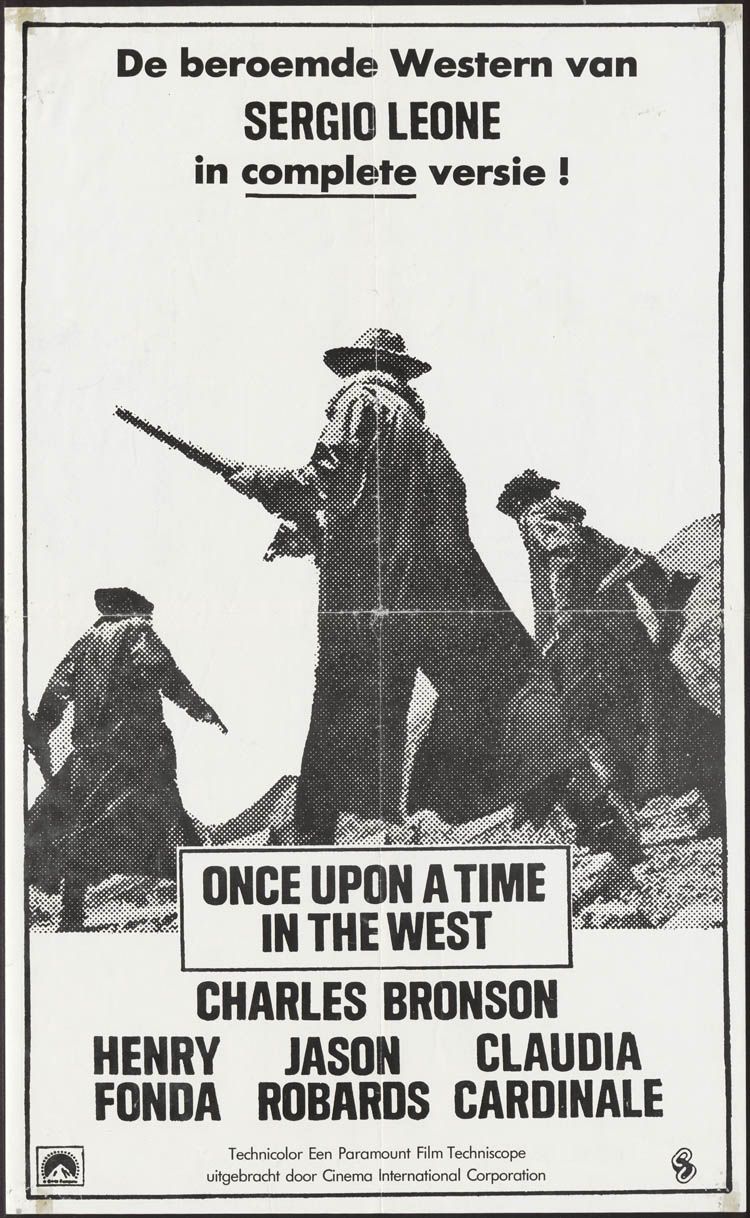
Once Upon a Time in the West
A mysterious stranger with a harmonica joins forces with a notorious desperado to protect a beautiful widow from a ruthless assassin working for the railroad.
- Director
- Sergio Leone
- Release Date
- July 4, 1969
- Cast
- Henry Fonda , Charles Bronson , Claudia Cardinale , Jason Robards , Gabriele Ferzetti
- Runtime
- 166 Minutes
- Main Genre
- Western
- Writers
- Sergio Leone , Sergio Donati , Dario Argento , Bernardo Bertolucci
- Production Company
- Rafran Cinematografica, San Marco, Paramount Pictures, Euro International Films
- Budget
- $5 Milllion
- Studio(s)
- Rafran Cinematografica , San Marco , Paramount Pictures
- Distributor(s)
- Paramount Pictures
|
Rotten Tomatoes |
96% |
|---|---|
|
IMDb |
8.5/10 |
|
Metacritic |
82% |
No other filmmaker in the history of Westerns ever elevated the genre to the highest forms of cinematic art better than Sergio Leone. Leone's virtuosity at constructing Western setpieces, especially final showdowns, remains unmatched, and, to be honest, the bulk of this entire list could have featured his films. The final moments of his most mature Western, Once Upon a Time in the West, emphasized the connection between its hero, Harmonica, and villain, Frank, by taking fifteen minutes of screentime to unfold.
As the scene plays out, Harmonica, played by Charles Bronson, and Frank, played by Henry Fonda, walk and wait. They constantly circle one another, stare at each other, squint, spit, and anticipate the perfect moment to strike. Just when it seems as if the audience can take no more, Leon chooses that moment to finally reveal why Harmonica hates Frank so much in the form of a flashback. It may be the most protracted final showdown of all time, but it's also easily one of the most memorable.
2 The Wild Bunch Concluded in a Ballet of Bloodshed
|
Rotten Tomatoes |
98% |
|---|---|
|
IMDb |
7.8/10 |
|
Metacritic |
91% |
When Sam Peckinpah directed a film, he never backed away from turning violence into a beautiful art form, using blood and gore like other artists use paint. In no movie is that style more apparent than in The Wild Bunch, in which a band of outlaws all meet a grisly end thanks to the Mexican Federal Army. Of course, these men don't go down without a fight, and the final showdown, dubbed "the Battle of Bloody Porch," is precisely as graphic as that name makes it sound.
In one of the most frantic shootouts ever committed to celluloid, The Wild Bunch's relentless five-minute-long ending sequence required nearly two weeks of filming, over 300 cuts, and 10,000 gunfire squibs. Accompanied by Peckinpah's tried-and-true slow-motion technique, the violence that unfolds on-screen during this sequence underscores the brutality and harsh reality of the Old West better than any Western ever made.
1 The Good, The Bad, and the Ugly Offered the Pinnacle of Final Showdowns
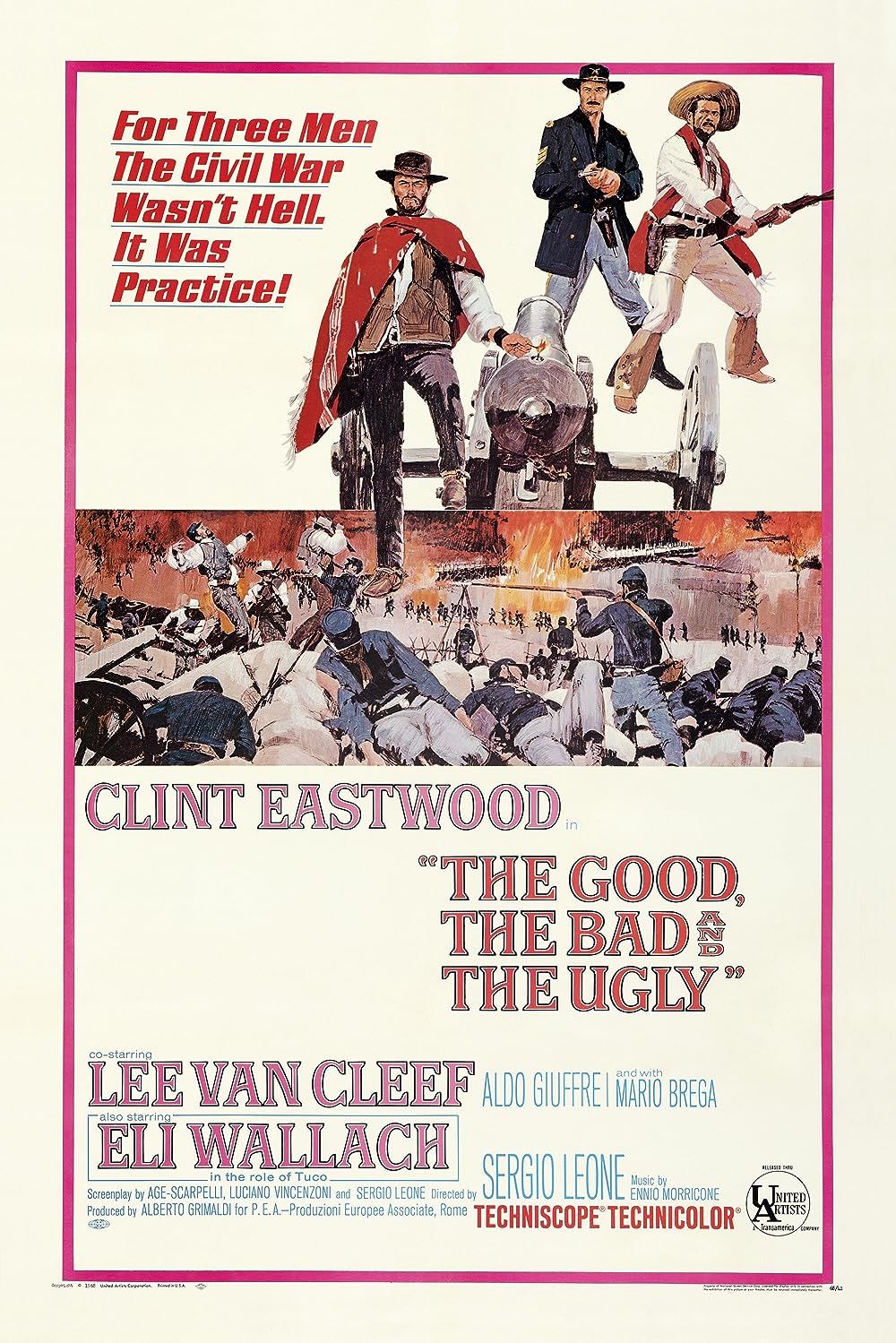
The Good, the Bad and the Ugly
Ennis and Jack are two shepherds who develop a sexual and emotional relationship. Their relationship becomes complicated when both of them get married to their respective girlfriends.
- Director
- Sergio Leone
- Release Date
- December 29, 1967
- Cast
- Clint Eastwood , Eli Wallach , Lee Van Cleef
- Runtime
- 2 hours 58 minutes
- Main Genre
- Western
- Writers
- Luciano Vincenzoni , Sergio Leone , Agenore Incrocci
- Production Company
- Produzioni Europee Associate (PEA), Arturo González Producciones Cinematográficas, Constantin Film
The granddaddy of all Western showdowns takes place in the final few moments of Sergio Leone's The Good, the Bad, and the Ugly. Much of that concerns how tremendously this sequence is underscored by Ennio Morricone's unforgettable piece, "The Trio," which works with Leone's camera to build suspense to unheard-of levels. As impactful as the score and camerawork are, the editing shines the brightest of all.
For nearly five minutes, this triangular standoff floats back and forth between the Man with No Name, Angel Eyes, and Tuco as each stares the other down, waiting for their moment to strike. The sweat drips from their faces as the sun catches their eyes, and the film's framing grows increasingly tighter. Just when it seems like audiences couldn't possibly be closer to the action, the shooting erupts, and everything ends in a flash. When that tension finally breaks, everyone who's ever seen this film inherently understands that they have just watched the most incredible final showdown of all time.

